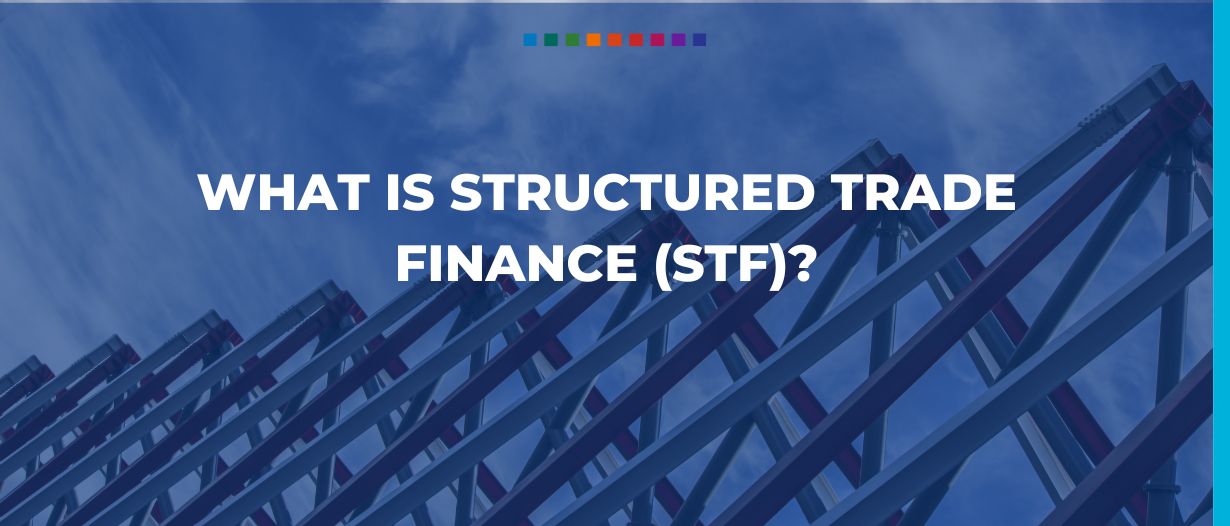Estimated reading time: 6 minutes
Structured Trade Finance (STF) – All you need to know
Structured trade finance (STF) is a type of debt finance where several different trade finance products from across the supply chain are structured together to have a unified structure.
As a more complex type of finance, it is often used as an alternative to conventional lending in developing countries and cross-border transactions to promote trade by using non-standard security.
It is often used in the commodity sector by processors, producers, traders, and end-users.
STF structures look at cross-border product flows and are backed by limited recourse trade finance lines. These structures aim to provide an enhanced security mechanism and improve the borrower’s position when viewed in isolation.
This is because many of the facilities are self-liquidating, meaning they pay themselves back through the sale or export proceeds of the underlying product. As a result, the funding tends to mirror the underlying trade cycles.
Structured trade finance works by bringing trade finance products from across the supply chain together so that they have a coherent structure.
The types of finance and security packages available to a borrower can vary widely, leading to many different types of structured trade finance.
These include:
- Uncommitted trade facilities
- Pre-export finance
- Receivables finance
- Inventory finance
- Countertrade
- Tolling financing; and
- Account receivables finance
Usually, these types of finance are set alongside the supply chain and able to be structured to work around terms agreed upon in large bilateral trading relationships.
Occassionally, however, they are put into special purpose vehicles to act as standalone structures, with other tools – like fixed price contracts and futures – used for price mitigation.
Take wheat, an agricultural commodity, as an example.
Multiple sources of finance could be used for a bale of wheat as it makes its way through the supply chain – from production and processing to storage and export.
Pre-export finance can be used for growing the stock of wheat, inventory finance can be used while it is stored in a warehouse awaiting shipment, and receivables finance can be used for when the goods are delivered.
Using STF, these various financing structures will sit together as one unified offering.
Conventional loans are typically offered by banks, credit unions, and other financial institutions.
In conventional lending, lenders provide approved businesses with lump-sum funding, and the businesses repay the loans (plus interest and any applicable fees) over an agreed-upon term.
In contrast, in structured trade finance, several loans are issued across multiple stages of the supply chain, and banks can tailor these financing arrangements based on the needs of the client.
The ultimate aim of structured trade finance is for the capital issued to mirror the trade cycle of a certain product so that the loan is repaid via the movement and sale of the exported goods.
STF structures are put together to mitigate the country-specific risks of trading in different jurisdictions.
This is because looking at the entire trade as a whole – which can only be done with these structures in place – adds resilience to the trade, bringing more confidence to the funders.
This added resilience allows funders to provide lengthened payment terms, diversified funding options, strategic procurement possibilities, and increased facility sizes.
Another reason why STF is so attractive is that, as compared to a standard loan, lenders place less emphasis on the strength of the borrower. Rather, they care much more about the structure of the transaction itself and the underlying cash flows.
This makes STF a particularly great option for small and medium enterprises (SMEs).
RESEARCH: Is SME trade finance viable? a Europe outlook
Structured trade finance is usually used for cross-border transactions in emerging markets. It tends to be used in high-value commodity transactions between bilateral trading partners.
Lenders:
Structured trade finance is used by both banks and non-banks. After the European banking crisis in 2008, global banks pulled back from financing in Asia and other emerging markets, so local and national banks stepped up to take their place.
Lenders tend to use structured trade finance as a means of risk mitigation, as each loan can be customised to a particular stage of the supply chain.
Structured trade finance assists lenders when protecting against supply shocks, demand changes, and price volatility.
Historically, commodity prices have tended to be relatively stable and predictable, which means that loans can be adapted quickly if conditions change. Over the last two years, however, the commodities markets have seen unprecedented volatility, so this association may be weakening among financiers.
For commodity producers, lenders can assist in accessing new markets and customers. This is mutually beneficial for both parties: the producer increases revenue by selling to new markets, while the lender collects interest on the new facilities provided.
Moreover, structured trade finance poses a lower risk for lenders (vs conventional lending), as the trade cycle is designed to be self-liquidating.
In other words, money borrowed to finance part of the supply chain is paid back by the production, processing, storing, transfer, or sale of the product.
Borrowers:
Structured trade finance is attractive for small businesses, as the strength of the borrower is not looked at as closely compared with a conventional loan.
The structure provides an enhanced security mechanism, whereby each individual part of the supply chain is supported by a range of funding.
As mentioned above, this means that lenders can reduce their exposure to a single country or to commodities prices and risks.
Finally, for borrowers, due to the flexible nature of structured finance, funding can easily be scaled up when necessary, and payment times can be lengthened.
Essentials of a structured trade finance transaction
Agreements are key in relationships, and this is particularly true for structured trade finance.
Structured trade finance must be governed by clear contracts and underlying covenants.
Security documents are the main lynchpin of structured trade finance agreements, using instruments such as charges on property, asset charges, guarantees, standby letters of credit, and debentures.
Beyond the paperwork, the true security of a structured trade finance transaction comes from the goods themselves, which finance themselves during the trade cycle.
How can TFG help?
At Trade Finance Global (TFG), our advisers are experts in all things international trade, and we can help you find the perfect partner bank or financial institution to suit your financing needs.
TFG can advise you on what financing works best for your business, so that you can feel safe and assured during a trade transaction.
By working TFG, we can help you with all the documentation and procedural requirements, bringing added trust and security to your trade.
Get in touch with our team here.
Get in touch with our trade team
 Australia
Australia Hong Kong
Hong Kong Japan
Japan Singapore
Singapore United Arab Emirates
United Arab Emirates United States
United States France
France Germany
Germany Ireland
Ireland Netherlands
Netherlands United Kingdom
United Kingdom












Comments are closed.